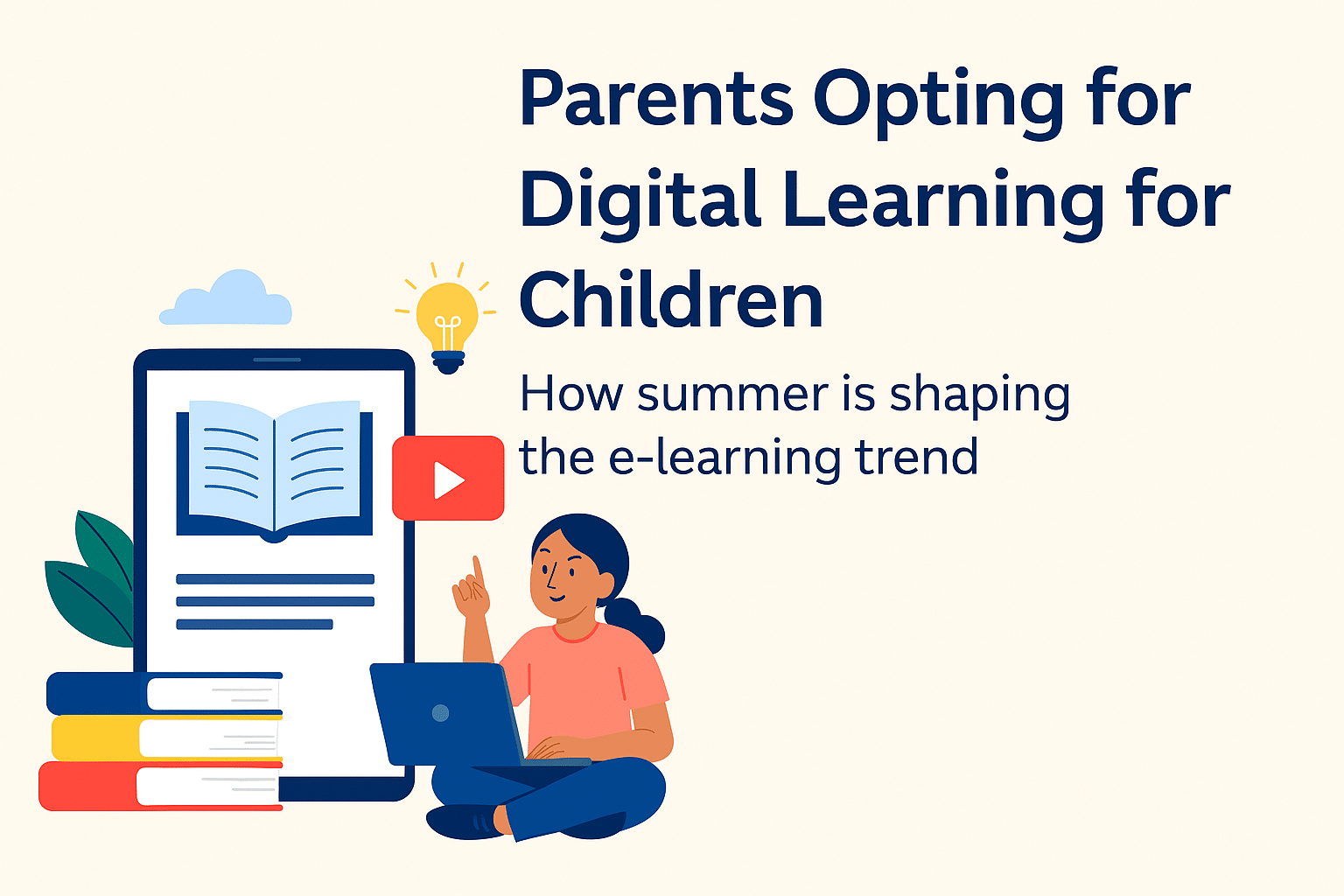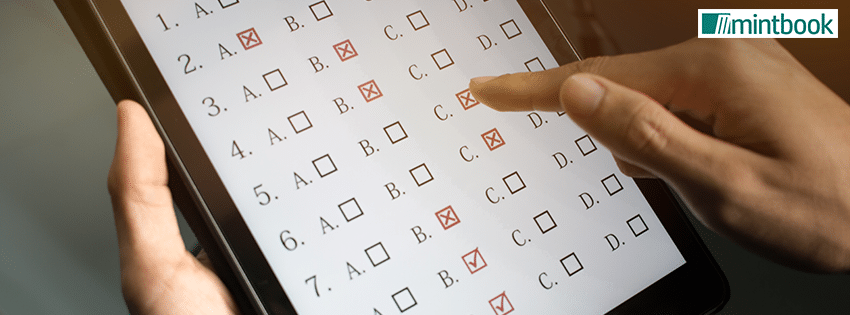Digital learning is a web-based learning process that makes use of digital means to impart knowledge. This was introduced only a few years ago and has received an incredible response. It is also known as the Smart Teaching Technique and is being slowly adopted in schools and educational institutions, thereby bringing a massive change in the educational system.
There was a time when parents used to think that traditional classes were more suitable for children. They used to think that regular attendance in classes would help them interact with teachers and kids of their own age, be disciplined, improve their mental alertness, and follow a regular schedule. However, with the introduction of e-learning tools, parents are encouraging kids to adopt digital learning.
Difference Between Traditional Learning and Digital Learning
Let us take a look at how digital learning measures up against traditional methods:
Interactive:
It is often perceived that with digital learning children would not get the opportunity to interact with fellow learners as it happens normally in classrooms. However, with the latest technological advances, social media has become an integral part of the digital learning experience and they can still interact with other learners.
Multimodal delivery:
With digital learning tools, children today have the option to pick their style of learning, unlike traditional methods. Numerous online programs offer live online training with remote instruction.
Flexibility:
Online learning is inherently flexible as it offers a way to juggle personal commitments with studies. There are online courses that can be customized to change the pace of learning, unlike traditional learning, which is a lot more rigid.
Engaging Content:
Digital libraries and learning platforms offer engaging content in the form of e-books, videos, quizzes, and gamified lessons. This interactive approach keeps children interested and helps them retain information better than passive learning methods.
Personalized Learning Experience
One-size-fits-all learning doesn’t work for every child. Digital learning solutions offer personalized recommendations based on a child’s interests and learning pace, ensuring they grasp concepts effectively and enjoy the process.
Skill Development Beyond Academics
Beyond school subjects, digital learning introduces children to essential skills such as coding, creative writing, and critical thinking. Summer vacation is the perfect time for children to explore new subjects and enhance their knowledge beyond the curriculum.
Safe and Supervised Learning
With concerns about excessive screen time and online distractions, digital learning platforms curated by experts ensure that children access safe, educational, and age-appropriate content. Parents can monitor progress and set time limits to ensure a balanced approach.

Benefits of Digital Learning Over the Traditional Education System
Irrespective of the extent to which technology is integrated into the classroom, digital learning has empowered students by encouraging them to learn and expand their horizons. In fact, according to a survey conducted a few years back more than half the students surveyed prefer using digital materials that are interactive, relevant, collaborative, and personalized.
Here is a list of the various benefits of digital learning:
- Digital learning is making students self-motivated and more responsible.
- It is making kids smarter.
- Digital learning technology is increasing information sharing rapidly among children.
- E-learning tools involve parents and teachers to a much larger extent.
- With the knowledge of digital learning tools and technology, children today have a better chance of getting employed.
- Digital learning tools are environment-friendly as kids can learn without wasting paper on books and handouts.
Tips for Parents to Make the Most of Digital Learning This Summer
- Set a daily or weekly schedule for digital learning to maintain a structured approach.
- Encourage children to explore subjects beyond their school curriculum, such as storytelling, science experiments, or a new language.
- Balance screen time with offline activities like reading physical books, outdoor play, and creative projects.
- Use parental controls and track progress to ensure that children engage with meaningful content.
How Mintbook’s Digital Library and Mbox Help
At Mintbook, we offer two powerful solutions to support digital learning:
- Digital Library: Our vast collection of e-books, audiobooks, and interactive learning materials provides students with rich educational content in a single platform. Parents can choose from various subjects, skill-based courses, and age-appropriate books to keep their children engaged.
- Mbox (Portable Digital Library): A unique solution for areas with limited internet connectivity, Mbox ensures uninterrupted access to educational resources. It’s an excellent choice for parents looking to provide quality learning material without reliance on a continuous internet connection.
Digital Learning for Children- Role of mBox in Digital Learning
MBOX is one of the most effective digital learning tools which is playing a major role in the increasing popularity of digital learning. Here’s how:
It has over 200+ eBooks and animated videos for school subjects and on competitive exam preparation, tech camps, DIY, and hacks.
Children will get access to study tools such as maps, e-geometry boxes, log tables, calculators, and periodic tables. It contains more than 100 simulations with instructions in Science and Math. You will get more than 100 practice question papers for each grade.
Digital learning for children fills the gaps where conventional classroom coaching fails. In fact, the benefits of digital learning tools are beyond what traditional learning techniques offer. From saving time with easy access to information, digital learning offers an efficient way to maximize resources, cut costs, and heighten impact and reach for children and teachers alike.
Preparing Children for the Future
Beyond just keeping kids engaged during summer, digital learning equips them with essential 21st-century skills. As technology continues to reshape industries, early exposure to digital tools fosters adaptability, problem-solving, and critical thinking. Platforms like Mintbook’s Digital Library and mBox not only provide access to vast learning resources but also encourage self-paced learning, helping children develop independence and a lifelong love for knowledge. By integrating digital learning into their routine, parents are ensuring their children are well-prepared for an increasingly tech-driven future.
Empowering Children with Personalized and Adaptive Learning
Digital platforms like Mintbook’s Unified Learning Platform have taken personalized education to the next level. Unlike one-size-fits-all methods, adaptive learning technologies assess each child’s unique strengths and weaknesses, automatically tailoring the pace and complexity of content. This helps every learner—regardless of background or ability—progress confidently at their own speed while keeping motivation high.
Key benefits:
-
AI-driven recommendations suggest eBooks, videos, and assessments relevant to each child’s interests and pace.
-
Progress tracking and analytics let parents and teachers fine-tune support to maximize outcomes.
-
Individualized pathways ensure that no student is left behind, making learning both effective and enjoyable
Conclusion:
Digital learning is transforming the way children engage with education. Parents who choose digital learning tools during summer vacation are not only keeping their children academically active but also providing them with valuable life skills. With platforms like Mintbook’s Digital Library and Mbox, learning can be seamless, engaging, and impactful.
This summer, let’s make learning fun and meaningful for our children. Explore Mintbook’s digital solutions today and ensure a productive break for your little ones!
We refreshed the content of the blog in August 2025 to make it more suitable for our readers.

